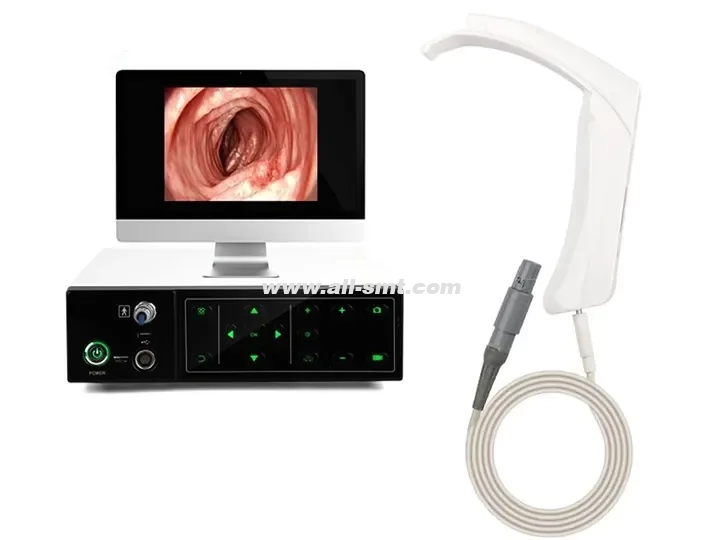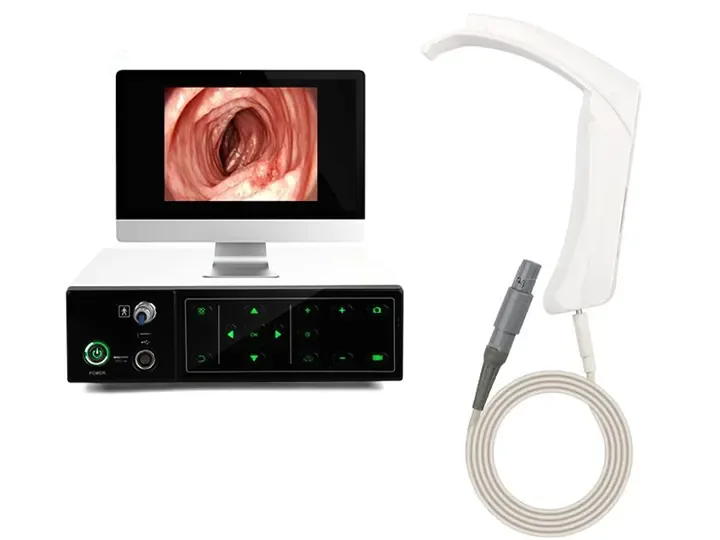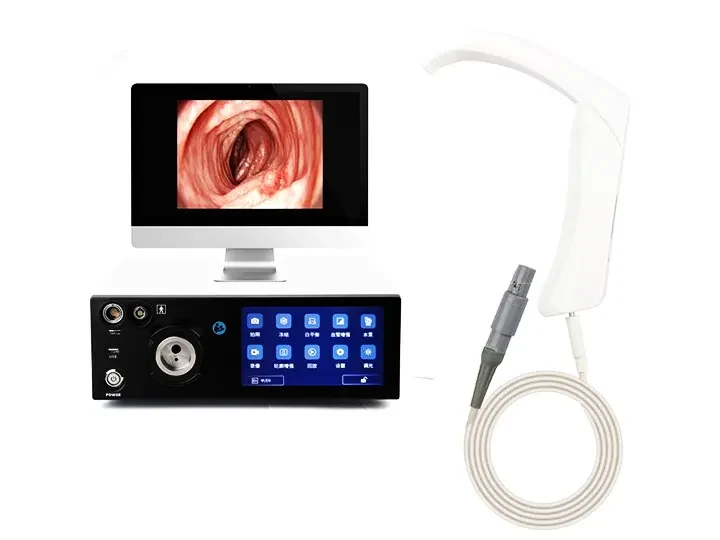The disposable video laryngoscope is a sterile, single-use airway management device, mainly used for tracheal intubation and upper respiratory tract examination. It integrates a high-definition camera and lighting system to provide clinicians with a clear view of the glottis, significantly improving the success rate of intubation, and is particularly suitable for difficult airway management.
1. Core structure and technical features
(1) Mirror body design
High-definition camera: micro CMOS sensor integrated at the front of the lens (resolution is usually 720P-1080P)
LED cold light source: low heat damage, adjustable brightness (30,000-50,000 lux)
Ergonomic: lens angle 60°-90°, reducing the risk of tooth damage
Anti-fog treatment: special coating or flushing channel design
(2) Display system
Portable host: 4.3-7 inch LCD screen, some support wireless transmission
Fast focus: automatic/manual focus adjustment (3-10cm)
(3) Disposable components
Lens, light source module, anti-pollution kit are packaged as a whole
Optional disposable blades (different models: Mac/Miller/straight)
2. Main clinical application scenarios
(1) Conventional endotracheal intubation
Airway establishment during general anesthesia surgery
Rapid intubation in the emergency department
ICU airway management
(2) Difficult airway management
Patients with limited cervical spine motion
Cases with mouth opening <3 cm
Mallampati grading level III-IV
(3) Other applications
Upper respiratory tract foreign body removal
Laryngeal examination teaching
Battlefield/disaster medical rescue
3. Advantages compared with traditional laryngoscopes
Parameters Disposable visual laryngoscope Traditional metal laryngoscope
Cross-infection risk Completely eliminated Depends on disinfection quality
Intubation success rate >95% (especially difficult airway) About 80-85%
Preparation time Ready to use after unpacking (<30 seconds) Disinfection preparation required (5-10 minutes)
Learning curve Shorter (mastery in about 10 cases) More than 50 cases of experience required
Cost 300-800 yuan per time Initial equipment is expensive but reusable
4. Precautions for operation
Pre-oxygenation: Ensure adequate oxygen supply before intubation
Posture adjustment: "Flower sniffing position" is the best
Anti-fog treatment: Soak in warm water or anti-fog agent before use
Force control: Avoid excessive force on the front teeth
Waste disposal: Dispose of as infectious medical waste
It is gradually becoming the standard configuration of emergency departments and anesthesia departments, especially in the context of global epidemic prevention and control, the demand has increased significantly.




